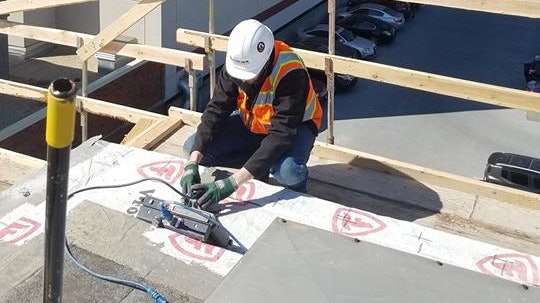
Concrete scanning is a crucial process in construction and renovation projects that involve cutting, coring, or drilling into concrete structures. By using specialized equipment, concrete scanning allows you to detect and map out the location of rebar, post-tension cables, conduits, and other objects hidden within the concrete. This guide will provide you with all the essential information you need to know before starting your next concrete scanning project.
What is Concrete Scanning?
Concrete scanning is a non-destructive method used to locate and identify objects embedded within concrete structures. This process is essential for ensuring the safety and integrity of the structure before any cutting or drilling work begins. By using various scanning technologies, such as ground-penetrating radar (GPR) and electromagnetic induction, concrete scanning can detect objects like rebar, post-tension cables, and conduits hidden beneath the surface.
Benefits of Concrete Scanning
- Prevents damage to embedded objects: By accurately mapping out the location of objects within the concrete, concrete scanning helps prevent accidental damage during cutting or drilling.
- Ensures structural integrity: Identifying the presence of rebar and post-tension cables helps maintain the structural integrity of the concrete.
- Improves safety: By avoiding accidental hits on electrical conduits or other objects, concrete scanning helps enhance safety on the construction site.
- Saves time and money: By minimizing the risks of damage and rework, concrete scanning can save time and costs associated with project delays.
Types of Concrete Scanning Technologies
There are several advanced technologies used in concrete scanning to detect and map out objects hidden within concrete structures. Some of the most common technologies include:
Ground-Penetrating Radar (GPR)
- Uses radar pulses to image the subsurface, detecting variations in material properties.
- Ideal for locating rebar, post-tension cables, and voids within concrete.
- Non-invasive and provides real-time results.
Electromagnetic Induction
- Works by inducing an electromagnetic field to detect objects with different electrical conductivity.
- Effective for locating metallic objects like rebar and conduits.
- Can be used on both concrete and asphalt surfaces.
Concrete X-Ray
- Utilizes X-ray technology to produce images of objects embedded within concrete.
- Provides detailed images of rebar, post-tension cables, and other objects.
- Requires specialized equipment and trained operators.
Best Practices for Concrete Scanning
To ensure a successful concrete scanning project, it is essential to follow best practices and guidelines. Here are some tips to consider before starting your next concrete scanning project:
Plan Ahead
- Identify the areas that need scanning and create a scanning plan.
- Coordinate with other trades and stakeholders to avoid conflicts.
Use Multiple Technologies
- Combine different scanning technologies for more accurate results.
- Verify the findings with multiple scans to confirm the location of objects.
Hire Experienced Professionals
- Work with certified technicians who have experience in concrete scanning.
- Ensure the operators are trained to use the equipment properly.
Interpret the Results
- Review and interpret the scan results to understand the location and depth of objects.
- Mark the scanned areas clearly to guide the cutting or drilling process.
Common Applications of Concrete Scanning
Concrete scanning is used in a wide range of construction and renovation projects to ensure the safety and integrity of concrete structures. Some common applications of concrete scanning include:
Concrete Cutting and Coring
- Locating rebar, post-tension cables, and conduits before cutting or coring concrete.
- Minimizing the risk of damage to embedded objects during the cutting process.
Structural Renovations
- Mapping out the location of objects for structural modifications and renovations.
- Ensuring the safety and integrity of the structure during renovation work.
Utility Installations
- Identifying the presence of underground utilities before excavation or drilling.
- Preventing damage to existing utilities and infrastructure during installation work.
Conclusion
Concrete scanning is a vital process in construction and renovation projects that involve working with concrete structures. By using advanced scanning technologies and following best practices, you can ensure the safety, integrity, and efficiency of your project. Remember to plan ahead, use multiple technologies, hire experienced professionals, and interpret the results accurately to achieve successful concrete scanning results.
